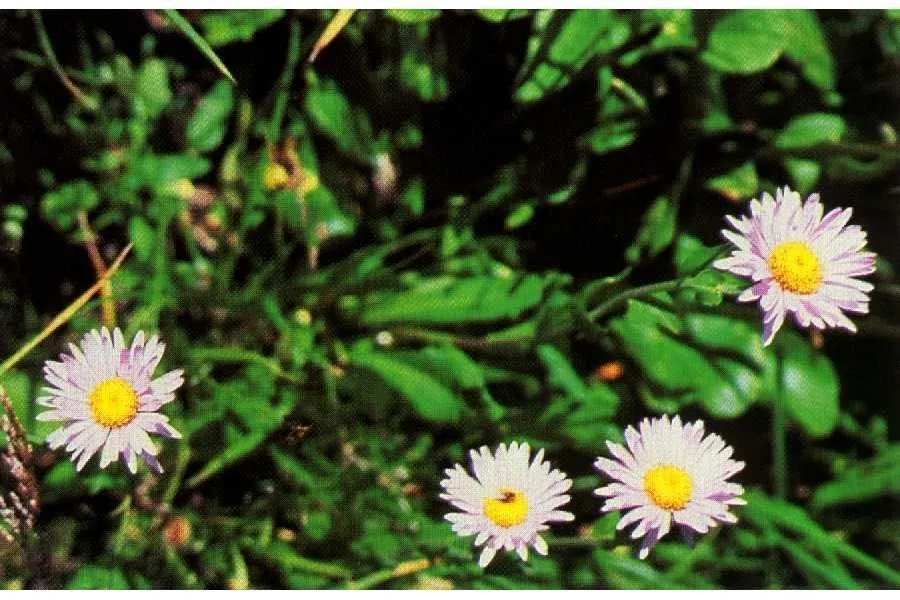
Author: Greene
Bibliography: Pittonia 3(16): 166 (1897)
Year: 1897
Status: accepted
Rank: species
Genus: Erigeron
Vegetable: False
Observations: Russian Far East, Subarctic America to NW. U.S.A.
Subalpine fleabane, known scientifically as Erigeron peregrinus, is a resilient and captivating flower that thrives in some of the world’s most challenging environments. This exquisite member of the Asteraceae family has established its presence across a broad geographic range, from the austere landscapes of the Russian Far East to the pristine wildernesses of Subarctic America, extending down into the northwestern United States.
First classified by the botanist Edward Lee Greene, who documented it in Pittonia volume three in 1897, the subalpine fleabane holds a significant place in botanical history. Greene’s meticulous observations point to the plant’s robust adaptability and unique morphological features, which have intrigued botanists and naturalists for over a century.
Erigeron peregrinus typically flourishes in subalpine to alpine zones, where it benefits from the cooler temperatures and well-drained soil conditions. It is particularly noted for its charming daisy-like flowers, which display a radiant array of delicate petals surrounding a bright yellow central disc. These flowers not only add a splash of color to the muted tones of high-altitude terrains but also play a vital role in the survival of various pollinators attracted to their vibrant blooms.
The plant’s name, ‘fleabane,’ historically hints at its utility in repelling insects, although this characteristic is more anecdotal than scientifically proven. Regardless, the subalpine fleabane’s resilient nature and aesthetic appeal have made it a treasured subject in both wildflower studies and natural landscaping.
Erigeron peregrinus embodies the tenacity and beauty of flora that thrive against the odds. Its widespread distribution across some of the harshest climates on the planet underscores its adaptability and ecological importance. Whether admired by hikers traversing subalpine trails or studied by scientists delving into alpine botanical diversity, the subalpine fleabane continues to enchant and intrigue those who encounter its elegant presence in the wild.
Eng: wandering fleabane, peregrine fleabane, subalpine daisy, subalpine fleabane
Fra: vergerette voyageuse
En: Subalpine fleabane, Wandering fleabane, Peregrine fleabane, Subalpine daisy
Fr: Vergerette voyageuse
Taken Feb 3, 2009 by EOL − Gerald and Buff Corsi (cc-by-nc-sa)
Taken Aug 2, 2022 by Naïs LE GAL (cc-by-sa)
Taken Aug 16, 2020 by Mike Lawton (cc-by-sa)
Taken Aug 13, 2020 by cas bullis (cc-by-sa)
Taken Aug 18, 2015 by Andrzej Konstantynowicz (cc-by-sa)
Taken Jul 14, 2022 by Natural Ethik (cc-by-sa)
Taken Jul 2, 2022 by Michael Finch (cc-by-sa)
Taken Jul 2, 2022 by Michael Finch (cc-by-sa)
Taken Jan 9, 2013 by EOL − Gary A. Monroe (cc-by-nc)
Taken Jan 1, 1900 by EOL − USDA NRCS Wetland Science Institute. (public)
Taken Feb 3, 2009 by EOL − Gerald and Buff Corsi (cc-by-nc-sa)
Taken Mar 20, 2013 by EOL − Wynn Anderson (cc-by-nc-sa)
Taken Mar 20, 2013 by EOL − Wynn Anderson (cc-by-nc-sa)
Taken Mar 20, 2013 by EOL − Wynn Anderson (cc-by-nc-sa)
Growth form>: Rhizomatous
Growth habit>: Forb/herb
Growth rate>: Moderate
Ph maximum: 7.5
Ph minimum: 6.4
Family: Myrtaceae Author: (F.Muell.) K.D.Hill & L.A.S.Johnson Bibliography: Telopea 6: 402 (1995) Year: 1995 Status:…
Family: Rubiaceae Author: Pierre ex A.Froehner Bibliography: Notizbl. Bot. Gart. Berlin-Dahlem 1: 237 (1897) Year:…
Family: Sapindaceae Author: Koidz. Bibliography: J. Coll. Sci. Imp. Univ. Tokyo 32(1): 38 (1911) Year:…
Family: Asteraceae Author: A.Gray Bibliography: Pacif. Railr. Rep.: 107 (1857) Year: 1857 Status: accepted Rank:…
Family: Fabaceae Author: Medik. Bibliography: Vorles. Churpfälz. Phys.-Ökon. Ges. 2: 398 (1787) Year: 1787 Status:…
Family: Aspleniaceae Author: (Cav.) Alston Bibliography: Bull. Misc. Inform. Kew 1932: 309 (1932) Year: 1932…